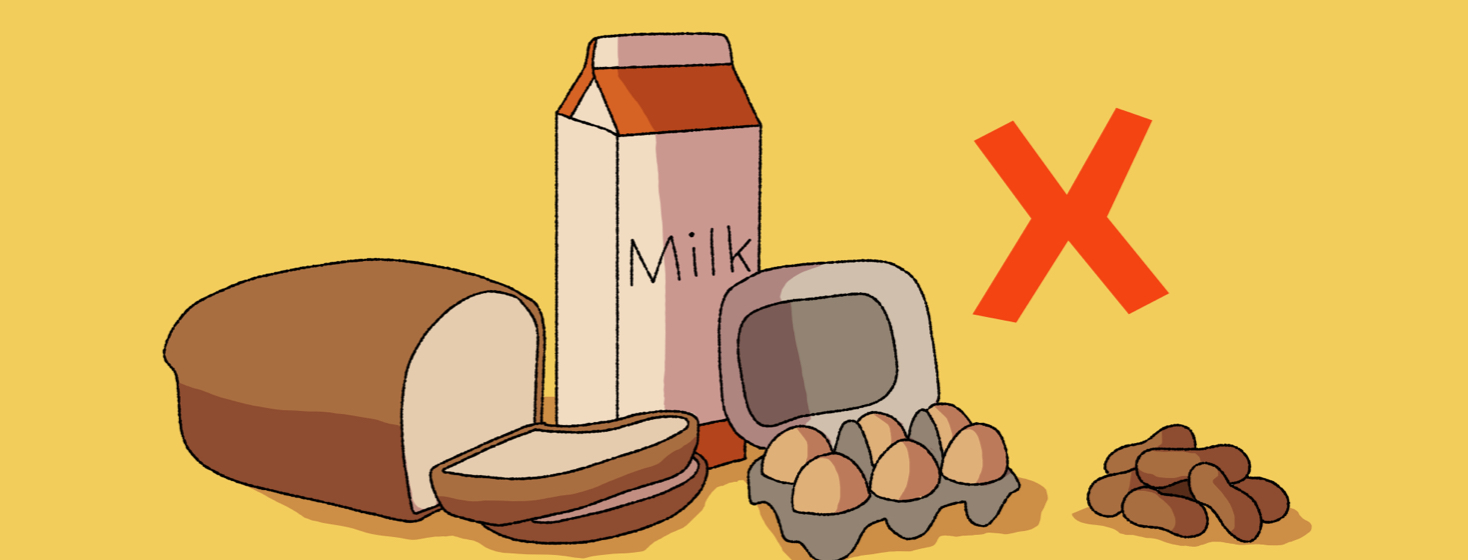Diet Management for Eosinophilic Esophagitis (EoE)
Reviewed by: HU Medical Review Board | Last reviewed: February 2023 | Last updated: October 2024
In people with eosinophilic esophagitis (EoE), inflammation causes damage to the esophagus, the tube that carries food from the mouth to the stomach. This damage is the result of an immune system reaction.1-3
EoE and the allergic response
People with EoE have a large number of immune system cells called eosinophils in their esophagus. These cells have many roles. One of these roles is to take part in the development of allergies.1-3
Just like people have allergies to pollen or dust, you can have allergies to food. While a pollen allergy may cause a runny nose or sneezing, some food allergies cause obvious rashes or throat swelling that leads to trouble breathing. But food allergies can also cause inflammation that can be harder to see.1-3
This is the case with EoE, where there is an immune cell reaction in the esophagus. This reaction can be triggered by both food allergens and non-food allergens, like pollen.1-3
The role of diet in EoE treatment
A few different drugs are used to treat EoE. Common types include:2,4
- Acid-reducing drugs – These are often used to treat acid reflux (gastroesophageal reflux disease, or GERD) and may be helpful in relieving symptoms of EoE. Proton pump inhibitors are examples of this type of drug.
- Drugs that affect the immune system – These can help turn down the allergic inflammation response that is causing damage to the esophagus. Steroids are an example of this type of drug.
- Monoclonal antibodies – These newer drugs block specific steps in the body's allergic inflammatory process. This helps reduce EoE symptoms. An example of this type of drug is Dupixent®.
However, drug treatment is not the only way to manage EoE symptoms. Changing your diet can help reduce exposure to foods that may cause inflammation in the esophagus. By limiting contact with these foods, it may be possible to prevent the inflammation from happening. This may prevent further EoE-related damage to the esophagus.4,5
Specific diets for EoE
There are 3 common approaches to making diet changes in EoE. These include following an elemental diet, an empiric elimination diet, or a testing-directed elimination diet.2,5,6
Elemental diet
The elemental diet is the most restrictive of the 3. It is also the hardest to follow. It involves removing all potential food allergens from your diet. In order to do this, you must only consume an elemental formula. It contains the basic nutrients and proteins you need to be healthy.2,5,6
In some cases, 1 or 2 other foods may be allowed along with the elemental formula. But most of the diet comes from the formula.2,5,6
The elemental formula can be difficult to consume due to the large volume, the taste, and the texture. In some cases, it may need to be given through a feeding tube.2,5,6
One type of feeding tube goes into the nose and down into your stomach. This is called a nasogastric tube (NG tube). This approach is most commonly used in children who have severe EoE and are not getting the nutrition they need. Another type of feeding tube is a gastronomy tube (G tube), which is connected to the stomach.2,5,6
Empiric elimination diet
An empiric elimination diet involves removing the most common food allergy-causing foods from the diet. The word "empiric" means to do something based on experience with many past examples. For some people with EoE, their doctor will recommend that they stop eating the allergenic foods that trigger reactions in most people with EoE.2,5,7
There is not a formula given to people on an empiric elimination diet. Instead, they eat a diet with normal foods but with certain restrictions.2,5,7
One elimination diet focuses on restricting 6 main types of food that commonly cause EoE. These include:5,7
- Cow’s milk (Dairy)
- Eggs
- Soy
- Wheat
- Peanuts and tree nuts
- Fish and shellfish
Another empiric diet focuses on 4 main food types. These are:5,7
- Cow’s milk
- Eggs
- Soy or other beans
- Wheat
If you decide to follow this type of elimination diet, you and your doctor will work together to figure out which approach is best for you.
After your symptoms have improved and a tissue biopsy shows no evidence of inflammation, your doctor may recommend adding one food group back in at a time. After a period of eating each food group, your doctor can do another tissue biopsy to see if the inflammation returned. This is the only way to find the exact food allergen cause of EoE.8
Challenges of diet management
As with any diet change, sticking to a new EoE diet plan can be challenging. Depending on the foods you are sensitive to, it can be hard to find things to eat. Limiting certain foods from your diet may also make it harder to get all the vitamins and nutrients you need.5
Before beginning any new diet, talk with your doctor. They can help make a plan that works for you and connect you with other resources you need. One way to help create the best plan for you may be to work with a dietitian or nutritionist.

Join the conversation